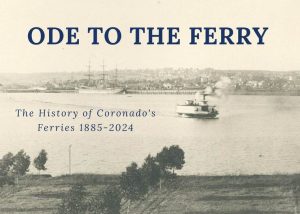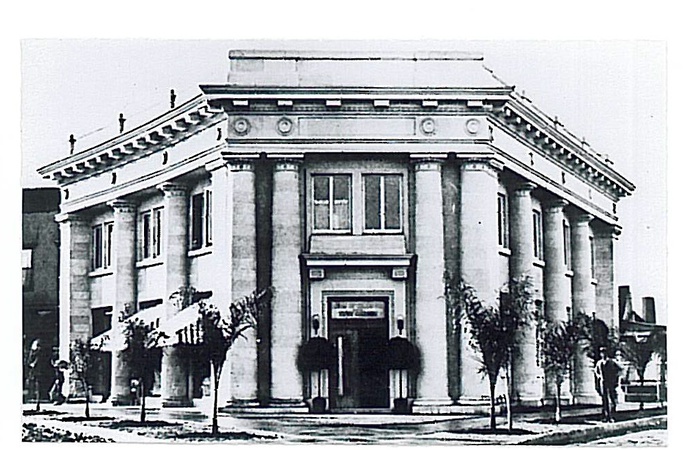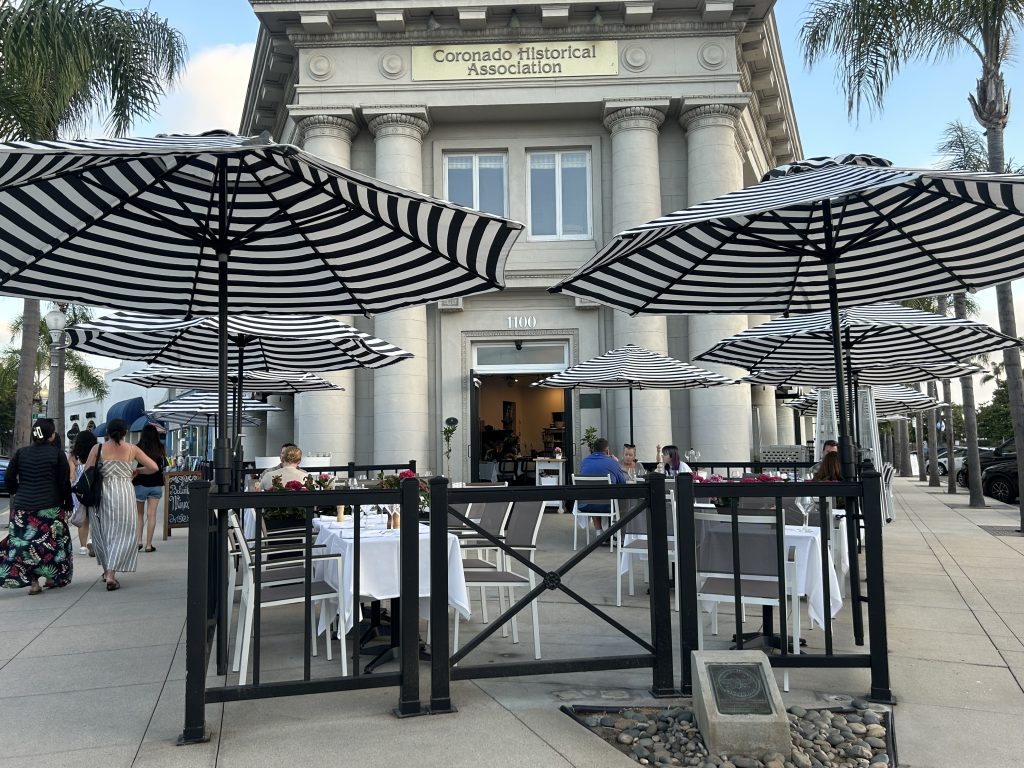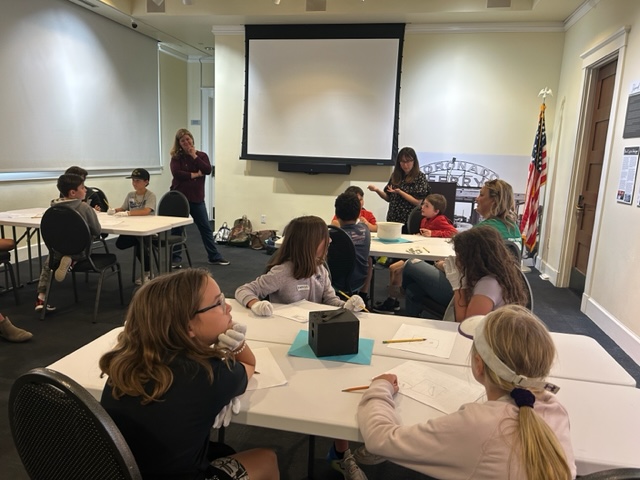
Christine Stokes looked around at a Historical Society in Northern California and felt what every person in a non profit hopes to feel – fulfilled. She had a great job at a wonderful museum and did everything she set out to do. “It started with a really large deficit, and we worked so hard,” Christine shares. “We got to the point where I had accomplished everything that I wanted – we had a budget surplus, and we had amazing programs in the community. I was ready for a new challenge.”
With a BA in Museum Studies and a support system made up of friends from college in San Diego, she took a leap of faith. “I moved to San Diego thinking I’ll get a great job that I love, but I’m in a really good place to take a break. I only had a break for about two months and a position opened at the Coronado Historical Association (CHA). It was the perfect fit. It’s a little bit of a larger organization than where I was working prior. I really love serving a community where you can see the impact of saving the history. Walking the streets, seeing history is all around us.”
Curating Before it Became a Buzz Word
Before there were Instagram curators and curated holiday gift guides, there were museum curators. “Vickie Stone, CHA Curator of Collections, overseas all of our historic objects, artifacts and archives,” said Christine. “The two of us work together to create collections in the museum. My job is history based. I bring in the educational side and the history side and we pair up. We’re writing an exhibit together to focus on the collections items that we have here in our museum. That’s what makes this historical association so special- the sheer amount of collections that we have.”
What exactly does that mean? Christine notes that CHA has over 40,000 photographs that they have scanned. There are also archival collections where you can read letters from 100 years ago. What stands out to Christine are the artifacts. “What’s really special are our 3D objects. They’re so unique and special that we want to make sure that they’re really incorporated into our exhibitions.”
Building an Exhibition
CHA exhibitions are developed around a topic. It might be an event anniversary or a present day topic that can be traced back in history.
 “We really highlight what’s already in our collection and what our community members are bringing in to tell that story,” Christine says. Our current exhibit is about the history of the ferries. The Coronado Historical Association was founded in 1969. When the bridge was going to open, community members were concerned about saving the last ferry. The group that founded the Coronado Historical Association had this wonderful idea to turn one of the ferries into a floating museum!”
“We really highlight what’s already in our collection and what our community members are bringing in to tell that story,” Christine says. Our current exhibit is about the history of the ferries. The Coronado Historical Association was founded in 1969. When the bridge was going to open, community members were concerned about saving the last ferry. The group that founded the Coronado Historical Association had this wonderful idea to turn one of the ferries into a floating museum!”
Christine laughs that the idea never came to fruition, but,
“What happened was this big realization that the things that make Coronado special and are historic could easily slip away.”
This motivated the founders to start collecting. “This was 1969, and right into the ’70s. Bicentennial historic preservation was on people’s minds across the United States. There was a real resurgence of homespun and victory gardens; getting back to the way that we used to do things,” Christine shares.
Protecting the Past While Championing the Future
If you want to see discourse about protecting history while adding big name businesses to town, Coronado social media groups are very opinionated. Christine’s take is one that everyone can embrace, “New things don’t mean they are anti-historical. We worry about anti-preservation. We’re big proponents of adaptive reuse, so maintaining what keeps Orange Ave. looking special. For these historic buildings like the Spreckels building, we focus on adaptive reuse. Why don’t we have some wonderful shops in this building? Why don’t we save upstairs where people can have apartments?”
Purchasing Coronado Historical Association building

In addition to the Spreckels building, another standout is its very own Coronado Historical Association building, which was originally the First National Bank.
Christine recounts how the CHA came to ownership of the building. “Just like everyone else’s experience during COVID, it was very difficult. We saw our reserves dwindling and we didn’t have income coming in as the museum was closed. We made a really important organizational decision to complete the gift of this building.”
She continues, “The historical association has been in this building since 2000. Don and Leslie Budinger had purchased the building, and we rehabilitated it, turning it into a museum with the board. The building was leased to the historical association. In 2020, when we realized the whole world’s changed and we were going to start drawing on our reserves, we identified the best way to move forward financially. It was to complete the gift. We received a state bond that has a very low interest rate to finalize the gift of the building by purchasing it for well under market value. Now, we are the owners of the building, and we have this wonderful asset.”
A New Neighbor, L’Orangerie
Christine says, “Our number one job for this building is preserving it. L’Orangerie is such a wonderful tenant. They have embraced the history of that space. When you come in, you see how it’s refreshed. It’s clean and beautiful, but it’s also very much a nod to the history of the space.”

In addition to keeping up the standard of the building, Christine gushes about the new restaurant in general. “It has been so wonderful to have a new restaurant that has really yummy food and is family run. They’re from France and their son married a woman who grew up here in Coronado. They knew that Coronado was such a special place and they brought and shared their wonderful homemade food. They’re also sharing this family community feeling. When you come into the historical association, our volunteers are so welcoming. You’re going to see people that you know, maybe it was your high school teacher. All of these wonderful people who volunteer here make it feel like a family. That’s exactly how the restaurant feels.”
In addition to the delicious menu and the family feeling, Christine also appreciates the restaurant’s immediate embrace of Coronado History. “L’Orangerie is named after the orange orchards at Marie Antoinette’s [palace in France]. We’re on Orange Ave. and we used to have orange trees. It’s genuine French food, they are genuine to the space, and it feels like history.”
Coronado Historical Association Programs
One program Christine is really proud of is the Third Grade Junior Historians. She shares, “The historical association has a special curriculum program where we teach local history in the schools. In third grade, every student in the state of California learns about their local history. We have a wonderful group of docents who are retired educators who go in and visit each third grade classroom in the private and public schools.”

This four-day program covers local history, citizenship and civics. An exciting element for the students is a field trip to the museum itself, in walking distance for schools on island. Christine explains, “They get to be historians for the day. They have white artifact gloves and get to see historic artifacts and investigate them in the museum.” One of Christine’s favorite games is to provide them an artifact and have students guess what it is. They provide some pretty funny answers.
The day doesn’t end after the museum. “After their visit here, they have lunch at Star Park and we talk about the League of Wives. It’s a really fun field trip and it’s why preserving Coronado history is so important. As they walk back, they learned about different historic buildings on Orange Avenue as the teachers point them out.”
After completing the program, the third graders receive their Jr. Historian membership card. The card can be used for a Museum Store discount and includes invitations to kid and family-friendly events. Kids are free with an accompanying adult at the December 12 lecture, Holiday Traditions at the Del. Tickets are selling fast, and reservations are required.
Coronado 101
In the spring CHA holds a parent night called Coronado 101. Parents are invited to learn what their children learned and experienced, and parents are just amazed. They may not know about they Monte Carlo; they might not know everything that Mr. Spreckels did.
Coronado 101 is also offered for the community (not just for parents of third graders). Various groups in Coronado have requested the program, and CHA is always happy to provide it. Examples of inquiring groups range from HOAs to nonprofits to social groups.
How to Get Involved at Coronado Historical Association
While Christine describes the organization as financially sound and working within a balanced budget, she shares why support is so important. “We still have to think about paying the mortgage, keeping the small staff that we do have and being able to produce the programs that we have. CHA relies on grants and the earned income from our museum store. We also have our tours and our lectures. Most importantly, the donations of our community – our members are a huge support. A yearly membership continues to keep this organization moving forward. We have a very generous community who sees the importance, not only of history and preservation of history, but also of education and the programs that we create.”
1100 Orange Avenue · 619-435-7242 · Facebook · @CoronadoHistory · CHA Website
Museum Galleries & Store Open · Tuesday-Sunday 10 am to 4 pm




